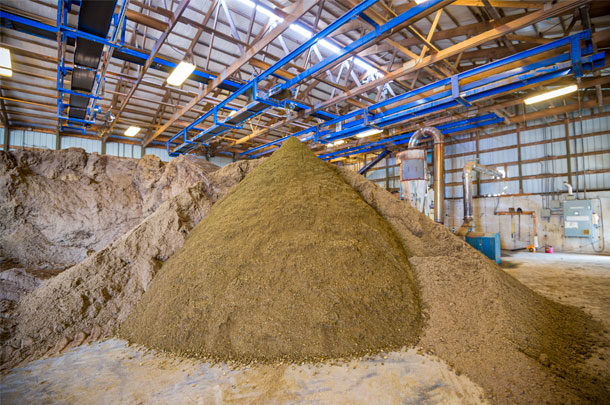As dairy farmers look for ways to diversify and add value, many are seeing the benefits of using manure as a revenue source. In its various forms, manure processed in an anaerobic digester can be used on the farm or sold. While it has its unique challenges, it can serve as livestock bedding or be used to produce electricity and natural gas.
“Processing and selling manure is a massive market opportunity for the dairy industry,” said Brian Dolski, chief financial officer of Pagel Family Businesses in Kewaunee, Wisconsin, who has worked with the compressed natural gas (CNG) industry for 10 years. Much of the CNG market remains in California, but that shouldn’t stop farmers elsewhere from considering the opportunity. “There is plenty of room in the industry,” he said.
In order to receive energy credits to sell, two pathways must be demonstrated after the gas is produced. A physical pathway consisting of an interstate pipeline to transport the gas is necessary. Farmers who live within 5 miles of a pipeline have a huge advantage because they don’t have to use pumps and trucks, Dolski said. And, a contractual pathway must also be formed in order to establish the environmental attributes of the gas.
“Being cognizant about connecting the dots in the value chain is where the money is,” Dolski said. “There are a lot of moving parts and mouths to feed, but farmers could potentially receive the lion’s share of 1,200 dollars per cow, per year, if they owned the project,” he added.
Giving it a try
Josh Meissner, co-owner of Norm-E-Lane Farm in Chili, Wisconsin, added a digester to his operation in 2007 after quadrupling the size of the dairy herd seven years earlier. After taking tours, searching out state and federal grants and keeping an open mind, Meissner completed his installation project in 2008 and became the 15th farm to have an on-site digester in Wisconsin. At the time, most of the onsite digesters in the state were creating electricity, so he went that route with a utility.
Keeping construction simple and maintaining a consistent product going into the digester are keys for success, Meissner said. Initially, his system was operating on dirty gas, which ruined the engine after just a few years. It was updated with a scrubber system to clean the gas and received a new engine.
“After doing the math of the digester install, we were at net zero,” Meissner said. “Then we added in the value of the bedding that came from it and saw a benefit of 250,000 dollars per year.”
 These are complete-mix, heated digester tanks that are each 1.25 million gallons. The heated process reduces pathogen load and helps generate methane to be syphoned, cleaned and turned into renewable natural gas (RNG). This facility is located in Dane, Wisconsin. Photos courtesy of Clean Fuel Partners.
These are complete-mix, heated digester tanks that are each 1.25 million gallons. The heated process reduces pathogen load and helps generate methane to be syphoned, cleaned and turned into renewable natural gas (RNG). This facility is located in Dane, Wisconsin. Photos courtesy of Clean Fuel Partners.
Sticking with it
Jessica Niekrasz, president of Clean Fuel Partners in Dane, Wisconsin, said there are always grand plans in place for digester installations, but after a few years, they require maintenance as parts wear out. She added, many farmers do realize the benefits of using excess heat and creating bedding. “Even though manure is hard to work with and corrosive, if a digester system is stabilized and there is a regular maintenance schedule, it can reach a profitable status.”
The primary challenge for digester operators is finding a talented, trustworthy workforce, Niekrasz said. These workers must be able to do the physical work of system maintenance but also need to be problem solvers.
Weighing the risks
Entering into an agreement involving a digester requires farmers and all other parties to assess how much risk they’re willing to take, including with the needed workforce, Jordan Hemaidan, a lawyer with Michael Best, said.
Agreements are created based on a farmer’s current setup as well as plans for the future, Hemaidan said. Manure purchase agreements, leases and biogas agreements are all dependent upon risk level. “From the farmer perspective, be very careful about who gets what risk,” he said. “Go into this with eyes wide open.”
Watch the full Dairy Strong presentation here.
This series is brought to you by the Dairy Business Association on behalf of the Dairy Strong conference, Jan. 19-20, 2022. This event focuses on cutting-edge technology, cultural trends and the future of the dairy community. Learn more about Dairy Strong here.






